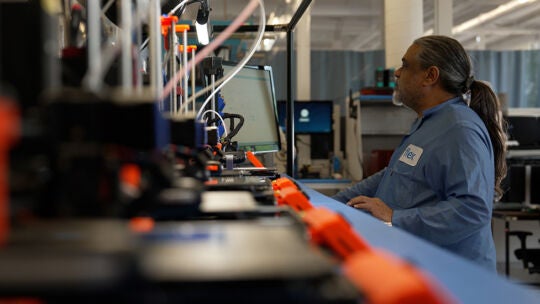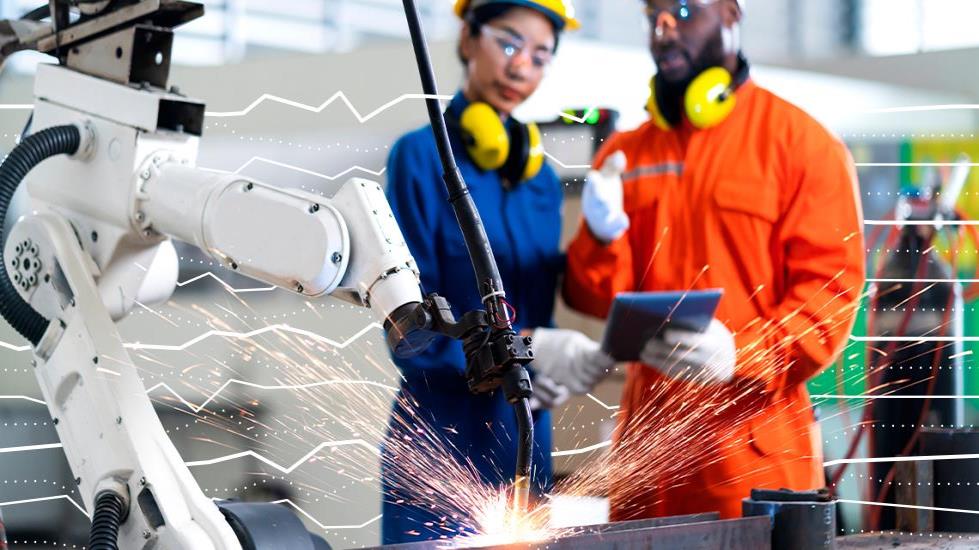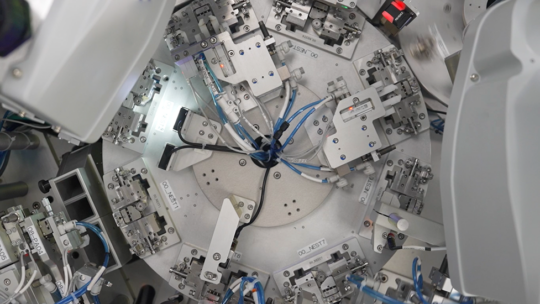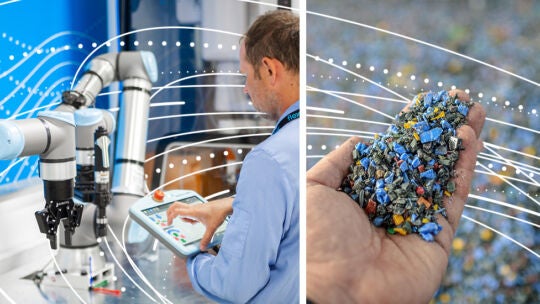
While the fourth industrial revolution represents a decade of progress, Flex’s Paul Baldassari wades through the buzz to spotlight the technologies driving the industry forward and the ideas that might get left behind.

For the past ten years, the manufacturing industry has been hyper-focused on discussing, exploring, and testing the promises of Industry 4.0. The benefits ushered in by the fourth industrial revolution focus heavily on implementing interconnectivity, automation, real-time data, and other advanced technologies that drive throughput, optimize processes and streamline efficiencies.
The global pandemic tested the maturity of this movement like never before, showcasing just how helpful these technologies are and how essential it is to have real-time data at your fingertips from suppliers to the factory floor.
Experts only expect the momentum to increase. IDC analysts shared investments in technology that support the future of work will grow nearly 17% in 2021, reaching $656 billion. Moreover, the manufacturing industry will account for almost one-third of that spending.
The reason? Much analysis shows that manufacturers prioritizing Industry 4.0 technology thrive and expect to see increased revenues over the next twelve months.
While the benefits are undeniable, identifying the tools that support the “factory of the future” isn’t always as easy as it sounds. During the past year and a half, we quickly learned that some of the promises of Industry 4.0 aren’t as important in a post-pandemic world, while others flourished and will continue to help us for years. As manufacturers plan to invest in advanced solutions for years to come, it’s important to separate hype from reality.
Manufacturing concepts receiving too much hype
A few major technologies and ideas haven’t lived up to the hype, including additive manufacturing, customization, and intelligent products.
While additive manufacturing has been excellent for quickly prototyping tools, fixtures, and spare parts, the promise to help high-volume production or 3D printed parts hasn’t proven itself. In some lower-volume manufacturing initiatives, such as aerospace, it’s worked great. But for high-volume or complex production, additive manufacturing has fallen short. Further, additive manufacturing only yields roughly 80% of the material strength compared to a part produced by molding, milling, or other traditional methods.
Another idea that gained strong momentum pre-pandemic that has quickly slowed is customization technology. The concept is still significant for some markets, such as enterprise computing and communication, but it’s not nearly as important to consumers as initially thought. Flex experts suggest that interface customization is essential for electronics, but people don’t want to be overwhelmed making the decisions required for a truly customizable product.
The final technology that has not lived up to its promise is highly configurable smart products. Early on in the Industry 4.0 movement, there was a belief that every product would define its journey through the manufacturing process. However, this requires a lot of strategy, design, time, and funding. There’s a lot more untapped value in investing and pushing intelligence on the factory floor than the actual product during manufacturing.
Advanced factory technology that is driving Industry 4.0
That’s not to say Industry 4.0 is a flop. On the contrary, several advanced solutions have been instrumental in shop floors worldwide that will continue to push the industry forward — and the past year-plus is proof.
Automation and robotics, for instance, were instrumental in spreading the shop floor and keeping employees adequately distanced. Augmented reality and digitization played a critical role in setting lines up quickly. And simulation was essential for virtually showcasing and making changes to factories, lines, and ramps.
As Flex leaders and I have discussed in other blogs, beyond keeping employees socially distanced, automation has the power to make work more enjoyable, improve safety on the factory floor, and advance career development. At Flex, we’ve seen incredible advances in throughput with the support of cobots, mobile robots, and other automation solutions. Advanced analytics and AI even enables teams to identify specific machines or tools that need maintenance before a catastrophic event.
Augmented reality and digitization enable organizations like Flex to set up screens in different factories to showcase best practices from site to site, share insights from connected devices, and provide feedback on how teams can increase yields. These technologies enable shop floor technicians to work together despite being thousands of miles apart, speeding up collaboration and throughput.
Finally, simulation helps organizations by providing a virtual view of the factory, showcasing what the line looks like, and highlighting machine views to identify and troubleshoot issues proactively. This virtual realm enables upfront conversations between customers and internal teams at the beginning of a project. Then, if a change is needed, it’s a simple switch to run a new simulated version, allowing analysis on multiple logic layers. Utilizing simulation, Flex has streamlined customer projects, optimizing scheduling to increase production by millions of products, and enhancing throughput in workstations by 70%.
Making the most of the fourth industrial revolution
We’ve reached a tipping point in manufacturing. Advanced manufacturing technologies are no longer nice to have but an imperative for organizations that want to stay competitive down the road. However, high volumes of data and advanced technology only help if it drives business decisions that make a real difference and improve outcomes.
Therefore, It should be no surprise that the solutions with the most promise are the ones that:
- Simplify repeatable, dangerous, dull, dirty, or difficult tasks to free up worker time for higher-level activity and projects
- Empower employees, from the shop floor to the corner office, with real-time data that enable quicker decisions
- Drive communication and flexibility
- Ensure resiliency throughout the manufacturing process
For manufacturing organizations looking to jump-start or bolster their Industry 4.0 journey with new investments, it’s crucial to realize that technology drives innovation. Still, humans are the critical ingredient in implementing, managing, and analyzing the technology in place. New implementations are only as good as the team’s ability to sustain new optimized processes that drive results.




